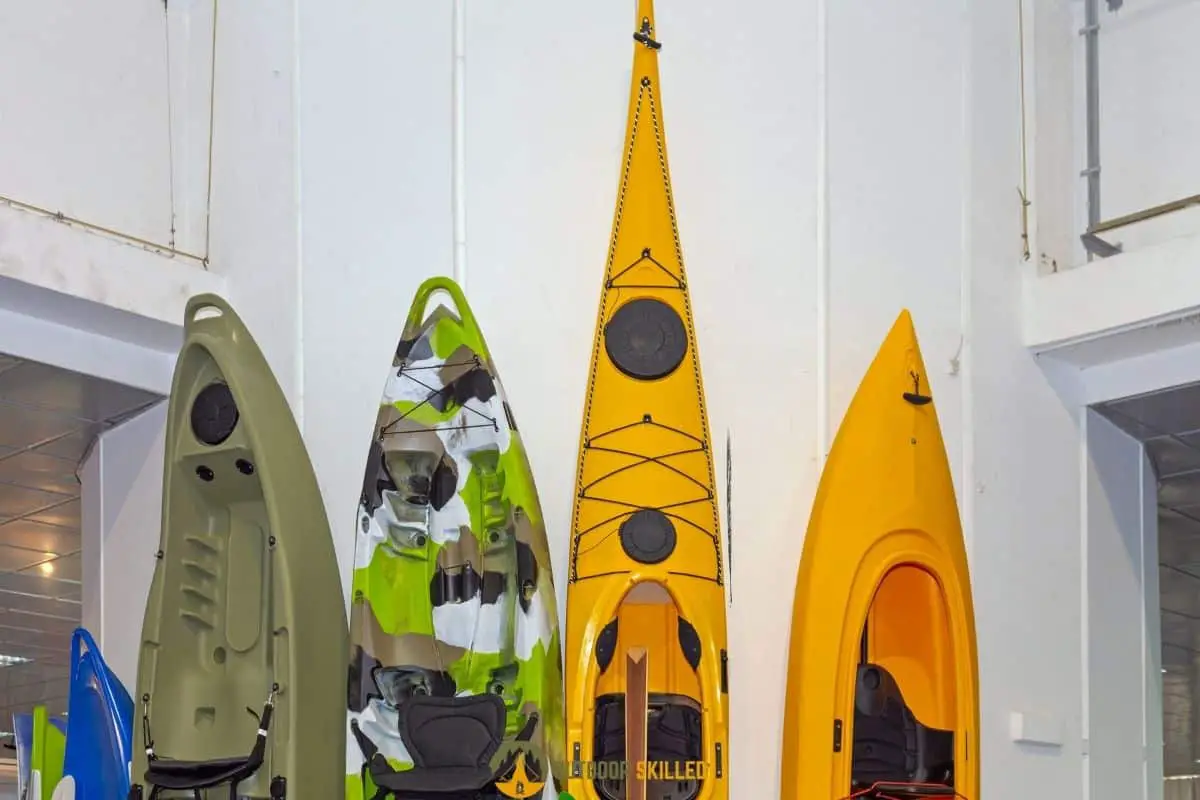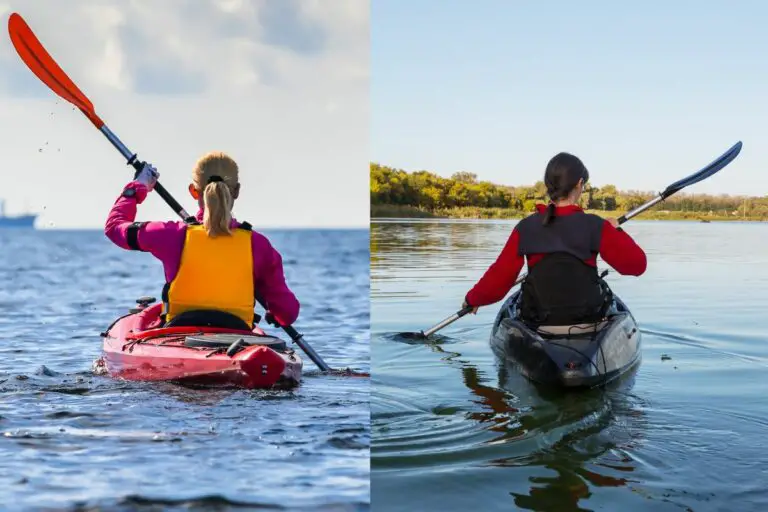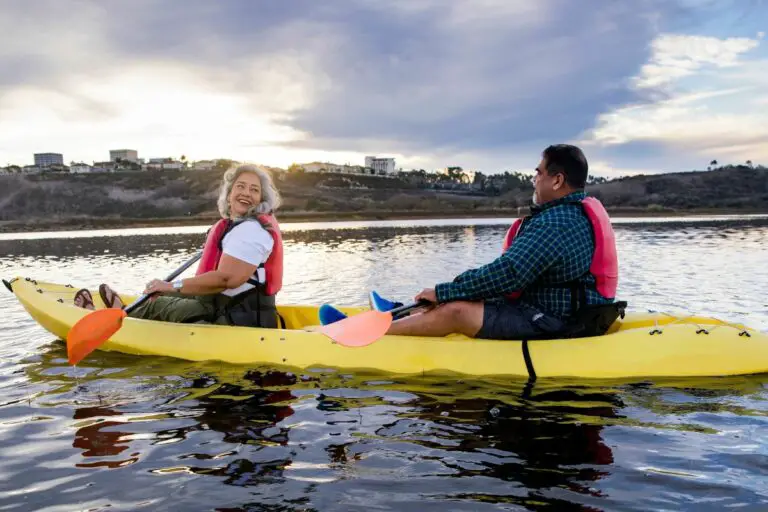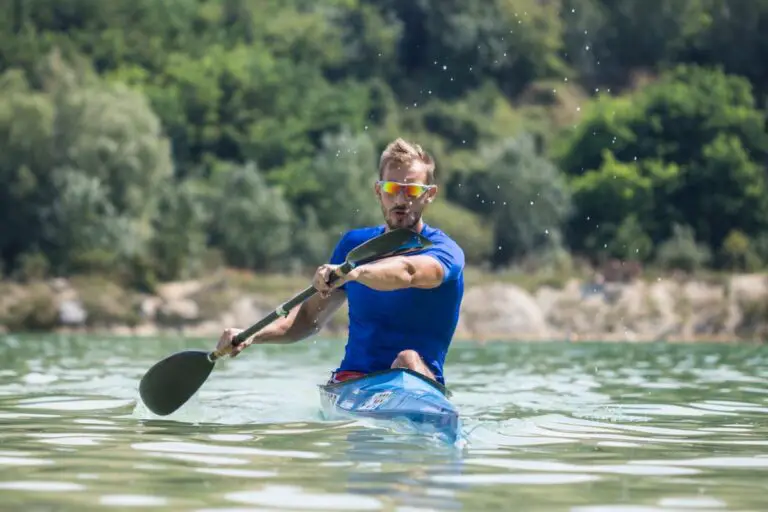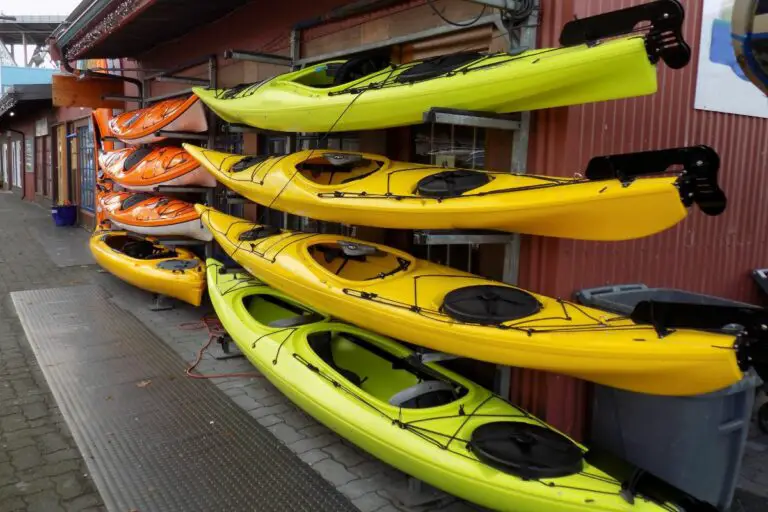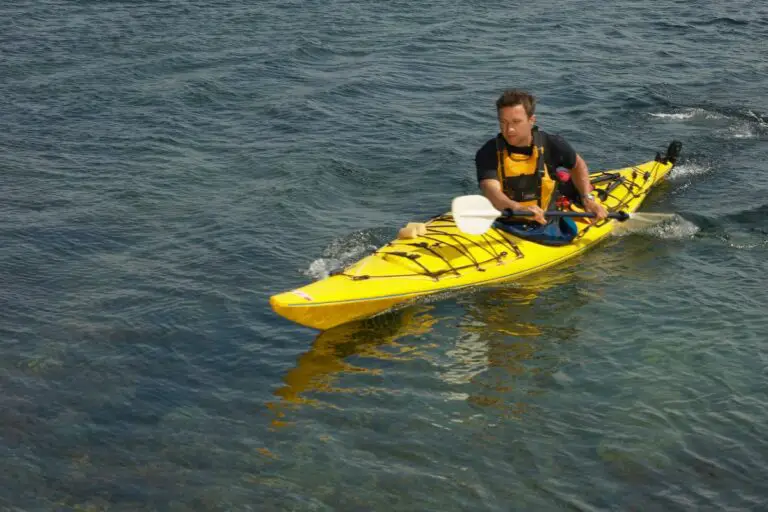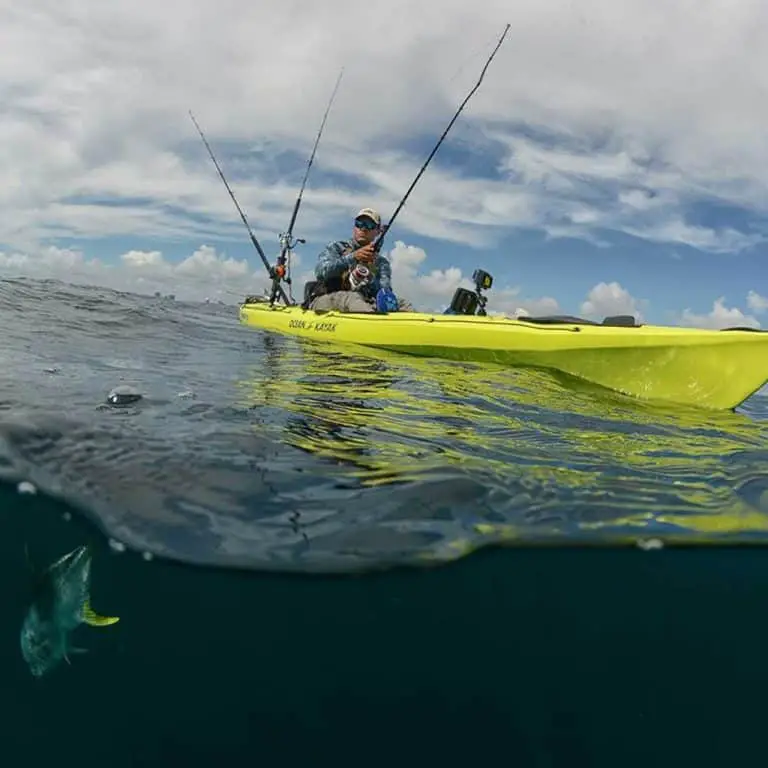Are Plastic Kayaks Good? Are They Worth The Money?
When buying their first kayak, beginners are confronted with several types and models to choose from. Most beginners go for plastic kayaks, so it’s important to understand what makes plastic kayaks a popular choice.
So, are plastic kayaks good? Plastic kayaks are good, especially for beginners. They are made of polyethylene which makes them durable, so they have a longer lifespan than other types of kayak material. They’re also cheaper and don’t require a lot of effort to maintain in good shape.
Keep reading to learn more about the pros and cons of plastic kayaks and how to properly maintain them. If what you’re looking for is to save some money, you should check out my picks for the best kayaks under $500 here as well.
Table of Contents
What Materials Are Kayaks Made of?

There are a few types of materials that manufacturers use to make kayaks. The material chosen usually depends on what the kayak will be used for.
These kinds of material include plastic, fiberglass, carbon fiber, kevlar, and wood.
The majority of whitewater kayaks or recreational kayaks and all sit-on-top kayaks are made of a plastic material. While touring kayaks and sea kayaks are mostly made of fiberglass, Kevlar, carbon fiber, or wood.
Plastic and fiberglass materials are both durable, however, the difference between them is that fiber glass is lighter and plastic is cheaper. On the other hand, carbon fiber and kevlar materials are both expensive and a lot less durable, but they make up for it as kayaks made of these materials are faster.
Wood is not used much to manufacture kayaks these days because it costs more and it makes the kayak a lot heavier in weight.
In this article we’ll be focusing more on plastic kayaks.
What You Need to Know About Plastic Kayaks
The material that goes into making plastic kayaks is known as polyethylene and there are some reasons for this material selection.
Polyethylene is one of the most commonly used polymers. It is abundant and relatively cheaper compared to other materials. It’s highly resistant to impact while having elastic-like properties that make it flexible and easy to mold. It also comes in different densities and can be dyed in different colors.
Aside from being used in manufacturing kayak hulls, polyethylene material is also used to make floatation devices, bulkheads, seats of boats and paddles.
How Are Plastic Kayaks Manufactured?
The way plastic kayaks are manufactured is by heating the polyethylene in very high temperatures and molding into a tough well-textured material. After the plastic kayaks are molded, they still need to be reinforced with protective coating to shield them from extreme exposure to UV rays.
What Are the Advantages and Disadvantages of Plastic Kayaks?
| Pros | Cons |
|---|---|
| More durable and can handle abuse on the shore or in the beach | Susceptible to warping (shape distortion) |
| Easier to repair | Very susceptible to UV light damage – can degrade faster with improper storage |
| Last longer | A lot heavier and require some effort load, unload, and handle |
| Float well on the water |
While plastic kayaks may not look as great as other types of kayaks, they make up for it with several advantages.
The biggest advantage plastic kayaks have is their durability. They can handle a significant amount of abuse. So, if you plan to kayak in shallow water or drag your kayak across the shore, it won’t really cause any permanent damage.
Plastic kayaks are easy to repair if they’re damaged and with proper maintenance and storage you can make them last a lot longer than other types of kayaks.
Another major advantage of plastic kayaks is that they’re less expensive than other types of kayaks because polyethylene is very abundant. They also float well on the water, making the kayak easier to maneuver.
However, plastic kayaks still have disadvantages that make them susceptible to some frustrating problems.
One of the disadvantages of plastic kayaks is that improper storage can distort the shape of the kayak and lead to what is commonly known as “warping”. That is because the polyethylene material is very susceptible to UV light damage which can cause the kayak to degrade faster if it’s not stored properly.
Plastic kayaks are also a lot heavier than other kayaks of the same size. An average plastic kayak of 16-17’ in length can weigh about 60-70 lbs. or more. This makes the kayak more difficult to load and unload from a vehicle, and more difficult to transport to and from the water as well. So, plastic kayaks require more effort from kayakers to handle.
How to Maintain a Plastic Kayak?
Even though plastic kayaks are highly durable, they still require some maintenance to keep them in good shape and make the last even longer.
There are some simple measures you can take. The most important one is to make sure the kayak is stored properly.
Keep your kayak shielded from the sun, because long exposure to UV light can affect the color of the kayak and also weaken the plastic making it brittle and more prone to damage. So, make sure to store the kayak inside or keep it undercover.
When storing your plastic kayak, you need to use a rack or a kayak cart instead of leaving your kayak on the ground and also make sure that the weight of the kayak is evenly distributed and that you’re using some sort of padding to prevent it from denting or warping.
Another important thing when it comes to kayak maintenance is to keep the kayak clean and dry.
To clean your kayak, you need to thoroughly scrub the interior and exterior with mild soapy water and rinse it to remove any debris, sand or salt. You also need to make sure your kayak is completely dry before storing it to prevent corrosion and mold growth.
How to Repair a Plastic Kayak?
The most common types of damage that happens with plastic kayaks are small scratches also known as “fuzz” and distortions or warping in the body from exposing the plastic to heat and stress.
Luckily, there are simple methods to repair both kinds of damage.
Heat Treatment
In order to restore the kayak to its original and repair any distortion or warping caused by exposure to the sun, you need to apply heat over the damaged area to soften the plastic then gently form it back into shape. An effective and safe method to apply heat is by pouring boiling water over the damaged area.
Shaving Scratches
Small scratches can simply be shaved away using cheap, disposable razors. While larger scratches can be smoothed out using a razor knife or box-cutters.
You can also check out the video below for more information on how to fix a thermoformed plastic Kayak;
Last Words; Buying a Cheap Kayak sometimes isn’t Worth it
Before you go, I would advise you to check out this quick comparison of cheap vs expensive kayaks and find out why sometimes saving money while buying your kayak can be a bad decision if you are not savvy enough. If you want to be a savvy buyer, you can learn how to save money while buying your first kayak here with some excellent pro tips that can save you hundreds of dollars without sacrificing the quality of the Kayak you’re getting.
Related Question
What Is the Difference between Hardshell Kayaks and Inflatable Kayaks?
Hardshell kayaks are made from wood, plastic or fiberglass while Inflatable kayaks are made from synthetic rubber. Hardshells are very durable but they’re heavy, hard to transport, and can take up more space. Inflatables on the other hand, can be deflated to fit in a small storage so they’re easier to transport, but they’re less durable.
What Are Composite Kayaks?
Composite kayaks are made from a blend of several materials such as fiberglass, kevlar and carbon fiber which are woven together and treated with an epoxy resin to make it rigid. This kind of kayak has better performance and more durability. However, it’s significantly more expensive due to the cost of the material and the method of construction.
Helpful Resources
Recreational Kayaking: The Ultimate Guide By Ken Whiting (you can also check the book on Amazon here)
If you like this article, please share it or pin it, you can find the share buttons below. We will really appreciate it ❤️

